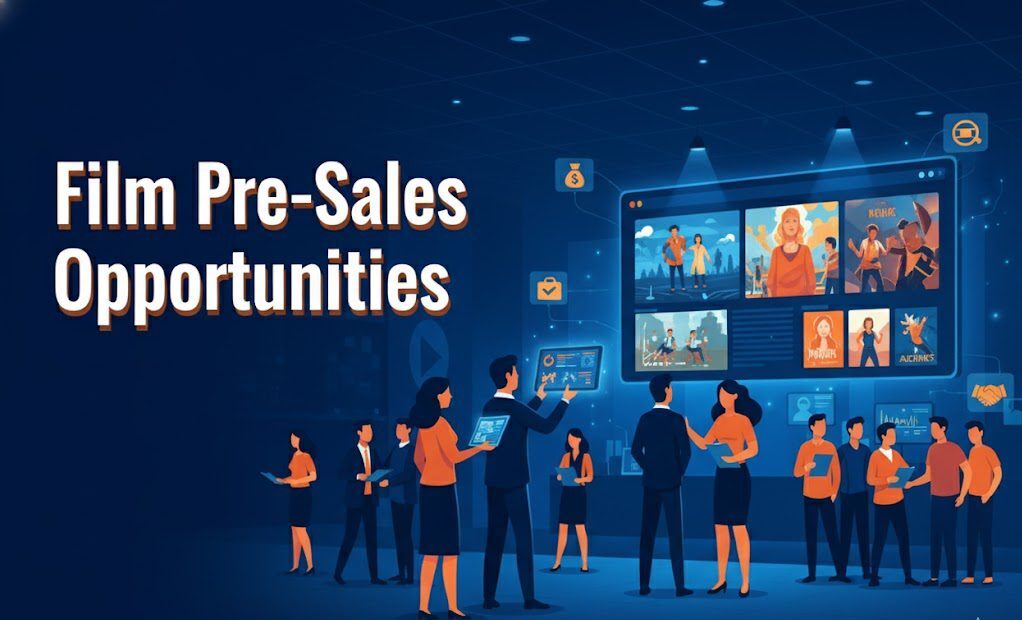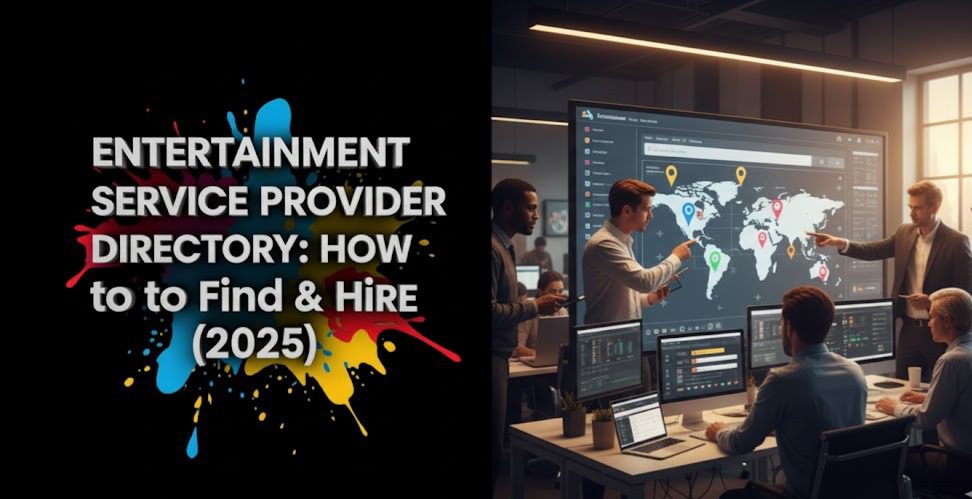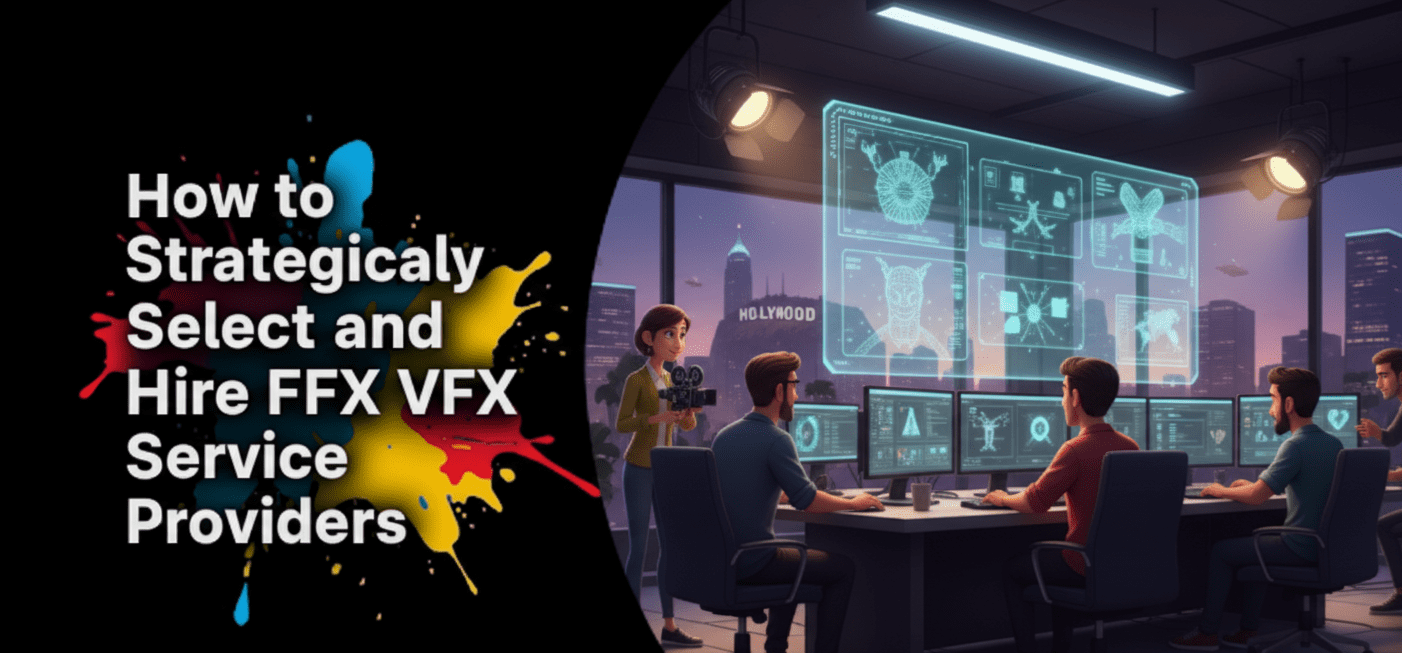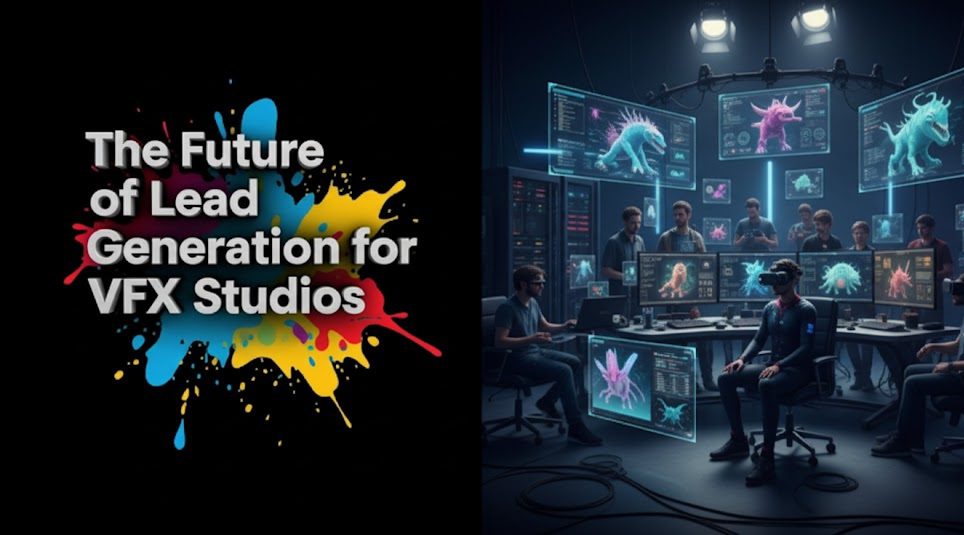Introduction
Animation is a magical art form that brings characters and stories to life, captivating audiences worldwide. But behind the creative wizardry lies a complex and dynamic industry: the business of animation. For industry professionals, students aspiring to join its ranks, and new entrants looking to understand its mechanics, grasping the commercial aspects is just as important as appreciating the artistry.
This guide will provide an overview of key commercial considerations, including crucial elements like animation content rights management, how animation licensing deals explained work in practice, and strategies for achieving global animation market overview and reach. Understanding these fundamentals is key to navigating and succeeding in the exciting world of animated content.
Table of content
- Introduction
- Key-Takeaways
- An Overview: What Constitutes the Business of Animation?
- The Foundation: Understanding Animation Content Rights Management
- Animation Licensing Deals Explained: Key Terms and Structures
- Monetization and Royalties: How Animated Content Generates Revenue
- Achieving Global Reach: Strategies for the International Animation Market
- The Role of Data and Market Intelligence in Animation Business
- Navigating Complexities with Modern Tools
- Conclusion
- FAQs
Key Takeaways
| Business Aspect | Core Insight | |
|---|---|---|
| The Business of Animation | Encompasses creation, financing, rights management, distribution, licensing, and monetization of animated content globally. | |
| Animation Content Rights Management | Crucial for protecting IP and maximizing revenue through strategic licensing of various rights (territorial, platform, window). | |
| Understanding Licensing Deals | Key terms include rights granted, territory, term, exclusivity, and financial models (flat fee, royalties, MGs). | |
| Royalties & Revenue Streams | Animation can generate revenue through direct licensing, ancillary rights (merchandising, games), and international sales. | |
| Global Reach Strategies | Involves localization (dubbing/subtitling), targeting international markets, and leveraging global distribution channels. | |
| Market Intelligence | Data on trends, buyer demand, and content valuation (insights often available via platforms like Vitrina) is vital. | |
| Further Learning | For a comprehensive overview, see our Ultimate Guide to Animated Content Licensing. | |
Stay Ahead with Animation Market Intelligence

An Overview: What Constitutes the Business of Animation?

The business of animation is a multifaceted ecosystem that extends far beyond the animation desk or rendering farm. It involves a complex interplay of creative development, financing, production, intellectual property management, marketing, distribution, and ultimately, monetization. Key commercial activities include securing funding for projects, managing budgets, strategically handling animation content rights management, negotiating licensing deals with broadcasters and platforms, distributing content across various territories and windows, and exploring ancillary revenue opportunities like merchandising and gaming. A successful animation venture requires not only artistic talent but also sharp business acumen to navigate this intricate global animation market overview.
Key Pillars of the Animation Business:
- Content Creation & Development: Ideation, scriptwriting, character design, storyboarding, and pre-production planning.
- Financing & Production: Securing funds (private investment, pre-sales, subsidies, co-productions) and managing the animation production pipeline.
- Intellectual Property (IP) Management: Protecting copyright, trademarks, and other IP associated with the animated characters and stories.
- Distribution & Sales (Licensing): Getting the finished content onto various platforms (TV, SVOD, AVOD, theatrical, etc.) worldwide through licensing agreements. This is where animation licensing deals explained become crucial.
- Marketing & Promotion: Building awareness and demand for the animated content among target audiences and potential buyers.
- Ancillary Rights Exploitation: Leveraging the IP for merchandising, games, books, live events, etc.
Each pillar plays a vital role in the overall success and profitability of an animated project or studio.
| Business Pillar | Core Activity | Commercial Goal |
|---|---|---|
| Development & Production | Creating high-quality animated content. | Produce marketable and appealing IP. |
| Rights Management & Licensing | Controlling and monetizing IP through deals. | Maximize revenue and global reach. |
| Marketing & Ancillaries | Building brand awareness and extending IP value. | Drive viewership and create additional revenue streams. |
The Foundation: Understanding Animation Content Rights Management
Effective animation content rights management is the bedrock of a sustainable animation business. It involves the strategic administration of the intellectual property (IP) rights associated with an animated film or series to control its use and maximize its value. This means understanding what rights you own, how they can be divided and licensed (e.g., by territory, platform, language, duration), and ensuring these rights are legally protected. Without diligent rights management, valuable opportunities for revenue generation can be missed, and your creative work could be vulnerable to unauthorized exploitation. For anyone involved in the business of animation, a solid grasp of rights is non-negotiable.
Key Aspects of Animation Rights Management:
- Establishing Clear Chain of Title: Ensuring you have documented proof of ownership for all elements of your animation, including the script, character designs, music (synchronization and master rights), and any underlying source material.
- Copyright Protection: Registering copyrights where applicable and understanding the duration and scope of copyright protection in different territories.
- Defining Licensable Rights: Understanding the different “sticks in the bundle” of rights that can be licensed, such as:
- Theatrical exhibition rights
- Television broadcast rights (Free TV, Pay TV)
- Video-on-Demand rights (SVOD, AVOD, TVOD)
- Home video rights (DVD, Blu-ray)
- Merchandising rights
- Gaming rights
- Publishing rights
- Territorial Rights Management: Strategically dividing global rights into specific territories or regions for licensing.
- Windowing Strategy: Planning the sequence and timing of how content is released across different platforms and rights types.
- Tracking and Enforcement: Monitoring how your content is being used by licensees and taking action against piracy or unauthorized use.
A proactive approach to animation content rights management is crucial for long-term success.
| Rights Management Activity | Importance | Example Action |
|---|---|---|
| Chain of Title Verification | Proves legal ownership and right to license. | Gathering all contracts for writers, artists, musicians. |
| Strategic Rights Segmentation | Allows for multiple revenue streams from one property. | Licensing SVOD rights to one platform and TV rights to another in the same territory (with different windows). |
| Rights Tracking | Prevents accidental double-licensing or missed renewal opportunities. | Using a rights management database to monitor all deals and expiries. |
Animation Licensing Deals Explained: Key Terms and Structures
At the heart of monetizing animated content are the licensing deals themselves. Having animation licensing deals explained clearly is crucial for anyone in the business of animation, whether you’re a producer selling your first short or an executive managing a large catalog. These agreements are legally binding contracts that outline precisely how, where, when, and for how much a licensee (e.g., a broadcaster or streaming platform) can use your animated content. While each deal is unique, most share common key terms and structures that define the scope of the partnership.
Essential Components of an Animation Licensing Deal:
- Grant of Rights: Specifies what the licensee can do (e.g., broadcast, stream on SVOD, include in an AVOD library), the language(s) permitted, and if rights are exclusive or non-exclusive.
- Territory: Defines the geographical area where the license is valid (e.g., “USA and Canada,” “Worldwide excluding China”).
- Term (License Period): The duration of the license (e.g., “3 years from first availability”).
- License Fee / Financial Model: How the licensor gets paid.
- Common models include:
- Flat Fee: A fixed sum for the rights.
- Minimum Guarantee (MG): An upfront payment recoupable against future royalties.
- Royalty/Revenue Share: A percentage of revenue generated by the content.
- Delivery Materials: Technical specifications for the master files, M&E tracks, scripts, artwork, etc.
- Warranties and Indemnities: Legal assurances from both parties (e.g., licensor warrants clear title; licensee warrants adherence to usage terms).
- Reporting and Audit Rights: For deals involving royalties or revenue share, detailing how performance will be reported and the licensor’s right to audit.
Understanding these terms is key to navigating the global animation market overview.
| Key Deal Term | What it Defines | Importance for Animation |
|---|---|---|
| Grant of Rights (Platform, Exclusivity) | How and where the animation can be shown. | Maximizes potential across different viewing environments. |
| Territory | Geographic scope of the license. | Allows for strategic international sales. |
| Term (Duration) | Length of the license period. | Determines when rights revert or can be re-licensed. |
| License Fee/Financial Model | Compensation structure for the licensor. | Core of the commercial viability of the deal. |
Connect with International Buyers and Distributors

Monetization and Royalties: How Animated Content Generates Revenue
The ultimate goal of the business of animation, from a commercial perspective, is effective monetization – generating revenue from the creative work. This is achieved through various animation monetization strategies, primarily centered around licensing the content and its associated intellectual property. Royalties, license fees, and revenue shares are common mechanisms through which animation creators and rights holders earn income. Understanding how these financial streams work is essential for assessing the value of animated content and building a sustainable business.
Primary Revenue Streams from Licensing:
- Upfront License Fees/Minimum Guarantees (MGs): As discussed, these are direct payments from licensees for the right to exhibit the animation. MGs provide guaranteed income that is then recouped against potential future earnings.
- Royalties/Revenue Share:
- Broadcast Royalties: Payments from TV channels, often based on factors like channel reach, number of runs, and advertising revenue (though flat fees are also common).
- VOD Royalties/Share: For AVOD, a share of ad revenue; for SVOD, sometimes a per-stream payment or a share of subscription revenue allocated by viewership (more complex and less common than MGs/flat fees for SVOD); for TVOD, a significant percentage of each rental/sale.
- Theatrical Box Office Share (for films): A percentage of ticket sales after the exhibitor’s share and distributor’s fees/expenses.
Ancillary Revenue – Beyond the Screen:
A significant part of animation industry revenue, especially for successful kids’ and family properties, comes from ancillary rights:
- Merchandising: Royalties from sales of toys, apparel, books, games, collectibles based on the animated characters and world.
- Publishing: Royalties from book adaptations, comics, etc.
- Gaming: License fees and/or royalties from video games based on the animation.
- Live Events/Theme Parks: Fees and revenue shares from stage shows or attractions.
Effective animation content rights management ensures these ancillary avenues are also strategically exploited.
| Revenue Type | Source | Common for Animation? |
|---|---|---|
| License Fees / MGs | TV Broadcasters, SVOD/AVOD Platforms, Theatrical Distributors. | Very Common. |
| Royalties / Revenue Share | AVOD (ad share), TVOD (transaction share), some SVOD models. | Common, especially for VOD. |
| Merchandising Royalties | Sales of toys, apparel, consumer products. | Very Common for successful Kids/Family IP. |
| Gaming/Interactive Royalties | Sales of video games, interactive apps. | Common for strong character-based IP. |
Achieving Global Reach: Strategies for the International Animation Market
Animation has a unique ability to transcend cultural and linguistic barriers, making the global animation market overview incredibly promising for rights holders. Achieving significant global reach for your animated content, however, requires deliberate strategies. This involves understanding different international market preferences, adapting your content appropriately through localization, and choosing the right distribution partners or platforms to connect with audiences worldwide. Successfully navigating international sales is a cornerstone of the modern business of animation.
Key Strategies for International Success:
- Market Research: Identify territories with high demand for your type of animation. Understand local cultural nuances, platform landscapes, and censorship regulations.
- Localization (Dubbing & Subtitling): Invest in high-quality dubbing (especially for kids’ content) and/or subtitling for target languages. Ensure cultural adaptation of scripts where necessary.
- Choosing Distribution Partners:
- International Sales Agents/Distributors: Partner with experienced agents who have strong relationships with buyers in specific regions.
- Direct Sales to Global Platforms: Some major SVODs acquire global or broad regional rights directly.
- Leveraging Global Content Marketplaces: Utilize online B2B platforms like Vitrina to showcase your animation to a worldwide network of buyers and facilitate international connections. This is an essential part of modern animation content rights management for global outreach.
- Attending International Markets & Festivals: Participate in key industry events (Annecy/MIFA, Kidscreen, MIPCOM, etc.) to network and pitch to international buyers.
- Co-Productions: Consider international co-productions to gain access to funding, talent, and distribution in partner countries.
Understanding Regional Preferences:
What’s popular can vary:
- Anime: Huge global demand, but particularly strong in North America, Europe, Southeast Asia, and Latin America.
- Pre-school Educational: Universal appeal, but specific curriculum needs might vary.
- European Animation: Often prized for its artistic style and diverse storytelling, appealing to both kids and adult arthouse audiences.
Tailoring your sales approach to regional tastes is key.
| Global Strategy Element | Purpose | Example Action |
|---|---|---|
| Market Research & Targeting | Focus sales efforts on highest potential territories. | Identifying that Germany has a strong market for a specific genre of kids’ animation. |
| Localization | Make content accessible and appealing to local audiences. | Creating high-quality Spanish and French dubs for a new animated series. |
| Using Global Sales Channels | Reach a broad network of international buyers efficiently. | Listing content on Vitrina, appointing a sales agent for Asia. |
The Role of Data and Market Intelligence in Animation Business
In today’s competitive business of animation, intuition and experience are valuable, but data and market intelligence provide a critical edge. Understanding animation market trends, audience preferences, content performance, and buyer demand through robust animation industry data and animation data analytics allows studios, distributors, and platforms to make more strategic and profitable decisions. This data-driven approach impacts everything from greenlighting new projects and valuing content to targeting the right buyers and optimizing distribution strategies for a better global animation market overview.
How Data Informs Animation Business Decisions:
- Content Development: Identifying genres, themes, or character archetypes that are currently in demand or show potential for future success.
- Valuation and Pricing: Using comparable data (comps) on licensing fees for similar animated content in specific territories/windows to set realistic prices.
- Targeting Buyers: Understanding which platforms or broadcasters are actively acquiring the type of animation you offer. Platforms like Vitrina provide insights into buyer interests by tracking their search and discovery patterns.
- Distribution Strategy: Determining the optimal windowing strategy and which territories to prioritize based on audience demand and platform reach.
- Marketing and Promotion: Tailoring marketing messages based on audience demographics and preferences for specific animated content.
- Performance Measurement: Tracking viewership and engagement to assess the ROI of licensed or produced content and inform future decisions.
Sources of Market Intelligence:
- Industry Reports: From market research firms specializing in media and entertainment.
- Platform Analytics: Data from streaming services (for their own content) or viewership data from broadcasters.
- B2B Content Marketplaces: Platforms like Vitrina’s Project Tracker can offer aggregated insights into buyer demand, trending genres, and deal activity.
- Social Media Analytics & Trend Watching: Gauging public buzz and emerging trends around animated content.
Making data part of your animation content rights management and sales process is crucial.
| Data Application | Benefit | Example Use |
|---|---|---|
| Demand Analysis | Identify what types of animation buyers are actively seeking. | A studio using Vitrina insights to see a surge in demand for sci-fi anime. |
| Pricing Benchmarking | Set competitive and fair license fees. | Comparing your proposed fee against recent deals for similar content. |
| Audience Insights | Understand viewer preferences to guide content creation/acquisition. | A platform licensing more animation with female protagonists based on viewership data. |
Navigating Complexities with Modern Tools
The business of animation, with its intricate rights structures, global markets, and diverse revenue streams, can be complex to navigate. Fortunately, modern tools and platforms are emerging to help industry professionals manage these complexities more effectively. Solutions that offer centralized catalog management, global buyer discovery, rights tracking capabilities, and market intelligence – such as those provided by Vitrina – can streamline workflows, enhance decision-making, and ultimately help animation businesses thrive. These tools assist in understanding animation licensing deals explained in practice by providing visibility into the marketplace, helping to connect the dots in the often opaque global animation market overview.
By leveraging such platforms, animation companies can more easily manage their animation content rights management, identify and connect with international buyers, stay informed about animation market trends, and make data-driven decisions about how to best monetize their valuable animated IP. Embracing these technological advancements is becoming essential for maintaining a competitive edge in the dynamic global animation industry.
Conclusion
The business of animation is a vibrant and complex interplay of creativity, commerce, and global connectivity. Understanding the fundamentals of animation content rights management, the structure of licensing deals, diverse monetization avenues including royalties, and strategies for achieving global reach is essential for anyone looking to succeed in this dynamic industry. As the global animation market overview continues to be shaped by new platforms and evolving audience demands, a strategic, data-informed approach, supported by modern tools like Vitrina, will be key to navigating the challenges and seizing the abundant opportunities that lie ahead.
Whether you are creating, selling, buying, or investing in animation, a solid grasp of its commercial underpinnings will empower you to make smarter decisions and contribute to the continued growth and innovation of this beloved art form. For a comprehensive foundation, our Ultimate Guide to Animated Content Licensing offers further insights.
Ready to master the business of animation? Explore Vitrina for market intelligence, global connections, and tools to optimize your animation content strategy.
Frequently Asked Questions
While many aspects are crucial, establishing and maintaining a clear “chain of title” (proof of ownership for all underlying rights) is foundational. Without it, you cannot legally license your content. Accurate tracking of all licenses granted (territories, terms, exclusivity) is also paramount in animation content rights management.
It varies. Some SVOD deals are flat-fee buyouts for a term. If royalties are involved (more common with AVOD or some performance-based SVOD deals), they might be a percentage of attributable ad revenue, a tiny per-stream fee (less common now for SVOD), or part of a more complex revenue allocation model based on viewership share within the platform. Clear definitions in the animation licensing deals explained in the contract are vital.
Some text
For successful animated properties, especially those targeting children and families with strong, appealing characters, merchandising revenue can be extremely significant, sometimes even surpassing licensing revenue from the content itself. It’s a major component of the overall animation industry revenue for hit franchises.






































